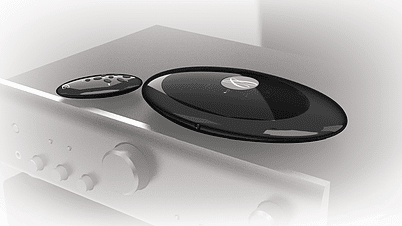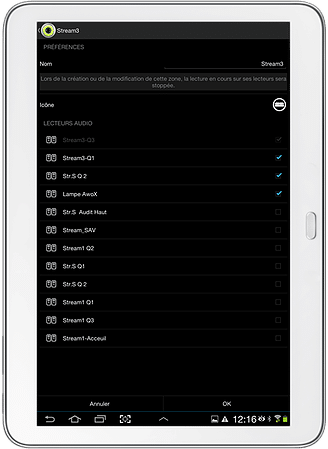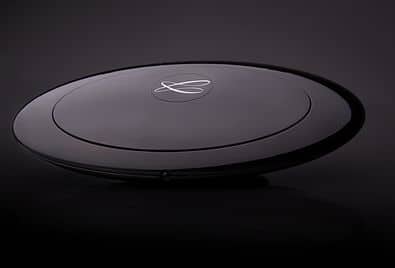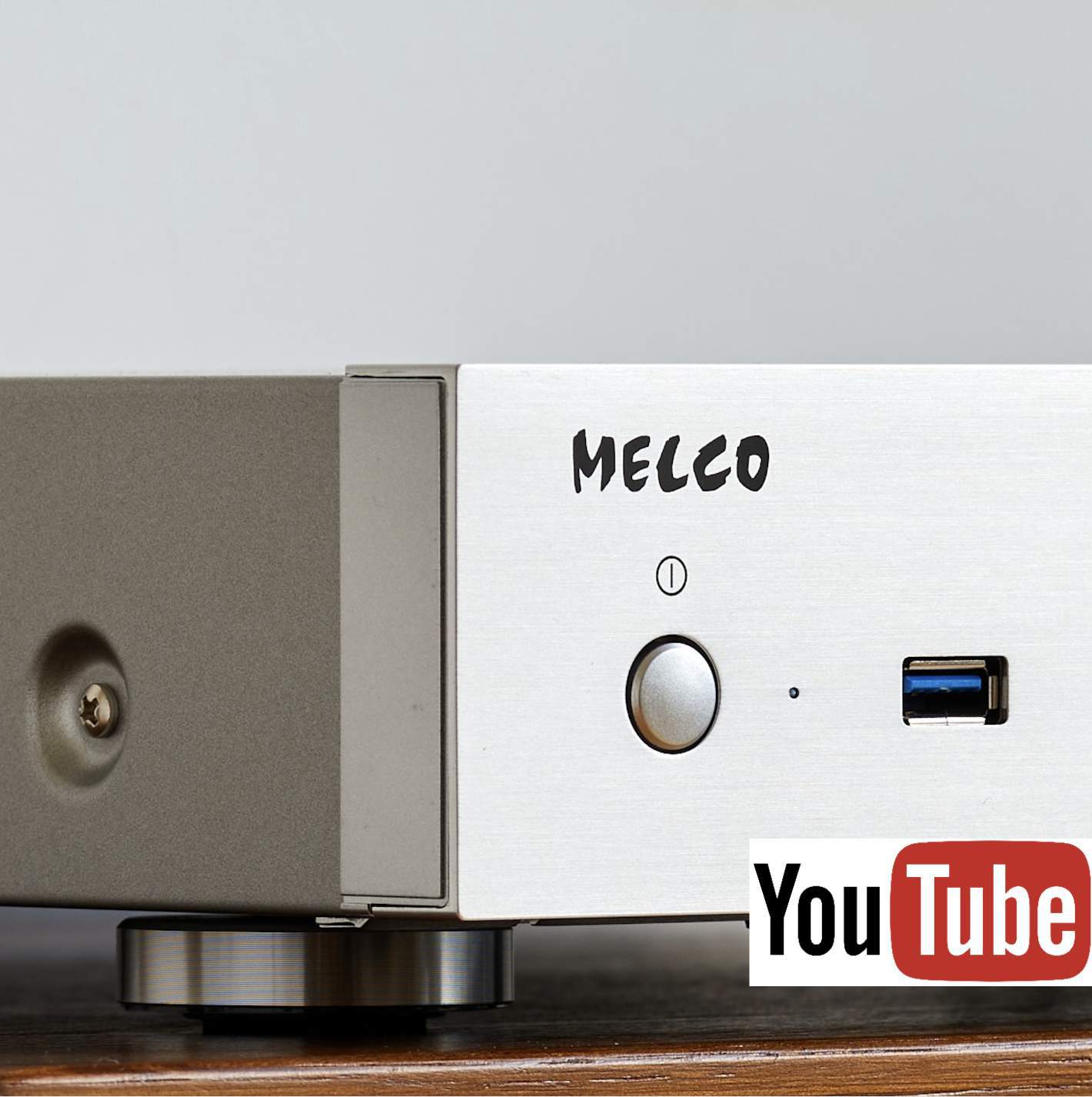The Article
Cabasse Stream Source: An Island In The Stream
3rd April 2016
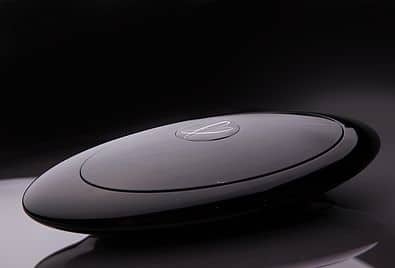
Offering a streaming bridge for digital music, Paul Rigby reviews the Cabasse Stream Source
Streaming music is currently the ‘flavour of the month’, in hi-fi terms. This is where commercially held digital music is currently moving. It’s thought that iTunes will follow, in fact.
The latest proponent for this sub-genre is Cabasse’s Stream Source. Pebble-shaped, it features a remote sensor on the front of the low-slung unit but it’s the rear if the chassis where all the action is because there is a host of connections to whet the appetite. They include a pair of RCA outputs to connect to a typical hi-fi amplifier, an optical output, USB (to connect an external hard disk or USB stick) plus an Ethernet connector and the power socket for a basic 12V wall-wart switching power supply. Other items at the rear include a volume on/off switch to disable the touch controls on the top of the chassis, WPS button to connect to a router, a reset button to return to factory settings plus Wi-Fi (DLNA) and Ethernet connection light indicators.
As indicated, there are also touch controls on the top of the chassis including a volume up/down, source switch from Wi-Fi to Bluetooth and a mute button.
Connections can be made wirelessly via Bluetooth, Wi-Fi and NFC with the aid of an app that can be installed on an iOS- or Android-powered mobile device such as a phone or tablet. Suitably configured, these devices can be used as a remote control. Otherwise, the smaller, also pebble-shaped, remote can be utilised which features the same controls as the main unit but adds play/pause as well as LED display on/off and Wi-Fi scanning.
Arriving in any colour as long as it’s black, the chassis weighs in at just 0.5kg and spans 40x231x136mm and supports WMA, PCM, AIFF, AAC, ALAC and FLAC up to 24bit/96kHz.
The Cabasse also supprts internet radio and the download service, Deezer, that can access over 30 million tracks.
SOUND QUALITY
I hooked up my computer-based hi-fi to the Cabasse via the twin phono outputs.
The first source of music that I reached for was my iPhone, already loaded with tracks. To connect the iPhone to the streamer, Cabasse recommend that you visit Apple’s App Store and download the Cabasse Stream Audio Control program. The installation requires a few button presses.
Before you open the Cabasse app, you need to access your Settings. If you opt for your usual Wi-Fi signal then the app will look for devices on that network but will not see the Cabasse which resides on its own Wi-Fi audio network. Hence, in the Wi-Fi menu, within Settings, locate the Stream Source option in the Wi-Fi menu list. Tap on that to select it. This will enable both your iPhone and the Cabasse to talk to each other.
I recommend establishing the Wi-Fi link before you load the app. If you load the app and then forge the link then the app will not see the Cabasse. If you do fall into this trap, then close down the app and relaunch.
Once loaded, the Cabasse app will declare that it has connected to the Stream Source. At this point, you will see your phone listed, pictorially, on a sideways sliding menu at the top of the screen along with an image of the Cabasse itself.
Tap on the phone icon to reveal categories of music (i.e.: Album, Artist, etc.). Then tap on the track you want to play and the music will spill out of your speakers.
I began with a 320kbps, 48kHz AAC file of From Let Us Garlands Bring Op.1 via Marianne Beate Kielland & Sergej Osadchuk. This melancholy piece is simple in construction: featuring just a female vocal and piano.
The source and music file format could hardly be termed as audiophile so this part of the test was mostly practical in nature. Nevertheless, the mechanics of playing the file, pausing and moving to and from other music files (via a playlist created within the app) was quick and efficient while the sonic output itself was, within the necessary sonic restrictions, pleasing and quite musical. Ideal for background music in an office or hobby room with all of the convenience that you might want.
Next, I connected my SSD-powered MacBook to the Cabasse. This was a simple matter of pairing Bluetooth with the Cabasse in the drop down Mac Bluetooth menu and playing a file with a general purpose player such as VLC. I must admit that I did have connection problems, initially, but I believe this is more to do with my OS X Yosemite upgrade than the Cabasse. Yosemite has had Bluetooth issues since its release.
Playing the 24bit/96kHz version of blues shouter, Harry ‘Big Daddy’ Hypolite’s Big Bad Girl, the rich nature of the midrange was evident along with a broad array of detail but the resolution of the file was too much for the Bluetooth protocol to handle which resulted, during higher volumes, in tight, slightly restricted upper mids and a relatively forward treble. Again, though, the sound quality was generally good for lower to medium volume, background use while the practicalities of laptop operation over a distance was well made with music selection, track changes and volume changes responding quickly and efficiently.
Finally, you can connect a hard drive or USB stick directly into the rear of the Cabasse, which offers the route for the best sound quality. Shunning the use of a noisy, mechanical external drive, I opted for solid state memory via a memory stick and played John Coltrane’s A Love Supreme as a 24bit/96kHz file.
Control was issued via the iPhone app while track selection involved tapping on the streamer icon in the app, tapping on the USB selection in the new menu and then tapping on the desire track. Again, the process was pretty quick and easy to use.
In play, the audio offered a relatively wide dynamic range with spacious and airy cymbal percussion, detailed and well formed piano. The vigorous sax performance from Coltrane was rather sharp in its presentation, though. This character was confirmed when playing the 24bit/96kHz version of George Harrison’s Women Don’t You Cry For Me. Both his voice, during crescendos plus his intricate guitar work sounded rather clinical within the upper mids. Bass was crisp and punchy, yes, but lacked any real lower bass slam or heft. That said, the USB option offered the broadest suite of detail while the soundstage was impressive in its span and height, giving a large, theatrical performance.
CONCLUSION
Despite the styling looking like lady’s diaphragm contraceptive case (according to my wife, anyhow), this rather ‘feminine’ shaped streamer performs well within its principle task, being relatively easy to set up, install and use. Its support options worked well while the differing musical source transferred their information without a hitch.
In terms of pure sound quality, the wireless protocols worked as expected, with an acceptable sound quality and, as long as you are not overly critical of the output, a great source for background music. I would question its use as a serious music carrier, even utilising solid-state memory as a music source but, as an office, hobby or bedroom accompaniment, it’s a user-friendly, useful addition to your musical armoury.
CABASSE STREAM SOURCE
Price: £299
Website: www.cabasse.com/en
Good: well designed, easy to use, flexible in use, general music carrier
Bad: clinical mids via USB, forward upper frequencies via Bluetooth/Wi-Fi
RATING: 6
REFERENCE
Chord Qute HD DAC
Tellurium Q cable
Rega Brio-R amp
AE Radiance One speakers

